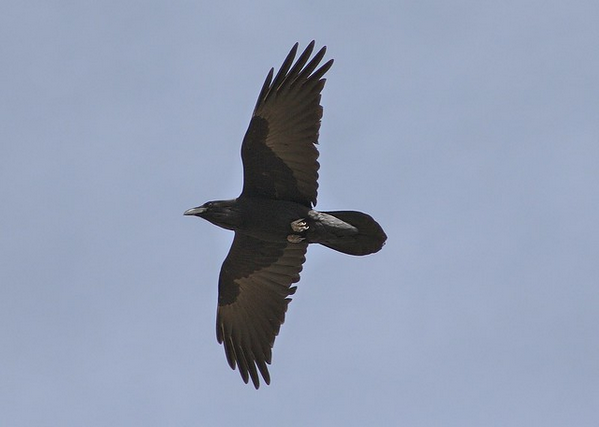For this discussion I settled on Corvus Corax or the Common raven as my species of choice. I find ravens a very interesting bird for a number of reasons including their mythological relevance with indigenous Alaskan populations, their unique visual appearance, and their intelligence. This combined with their frequent presence in urban areas of Alaska, made them seem like a solid pick for this assignment. Unfortunately, I was not able to acquire any photographs of wild specimens, but I was able to find a number of records available on the Arctos database for review, and as such I will be focusing on Part B of this week’s assignment.
The Arctos database contained just over 2,000 records of Corvus Corax specimens, though not every specimen was fully intact or identified with the same degree of confidence, with some specimens consisting of a single bone. Some of the specimens were collected as far back as 1900, though the accuracy of these dates varied greatly throughout the collection, with some specimens dated to a specific day, others to a month, and some lack any collection date at all. The geographic range of the specimens seemed a close fit to the expected species range, with samples ranging from the United States, Canada, Greenland to Mongolia, El Salvador, and Texas. Though the range was extensive the distribution of specimens within that range heavily skewed towards Alaska and Canada, with only single specimen in El Salvador and Mongolia, and the El Salvador specimen was on the skin of the raven.
Most of the records included the identity of the collector or identifier, when and where it was collected and its place of residence, though there were specimens who lacked one or more of these details. Similarly, data about the specimens varied widely, likely due to different focuses by the collectors and the intactness of the specimen. Some information that was collected included, Age, sex, weight, Condition of the Body, and the presence of any parasites.
When collecting data from a living specimen you are limited by the measurements that can be conducted without harming the subject, and the exact data can vary depending on the collectors interest with the specimen, but features should include factors such as age, sex, wingspan, and weight, as well as the name of the person collecting this data, and the subjects point of origin. For dead and preserved specimens, we can include the condition of the specimen, internal measurements such as contents of the stomach or presence of parasites, and the date of death should be included if possible.
My question for this week is this: How much control should researchers have over the data collected for their specimens relative to the museum? Should researchers be able to keep certain information private for specimens they collected until their research is published or should that material be included in the museums records as soon as they take ownership of the collection?
